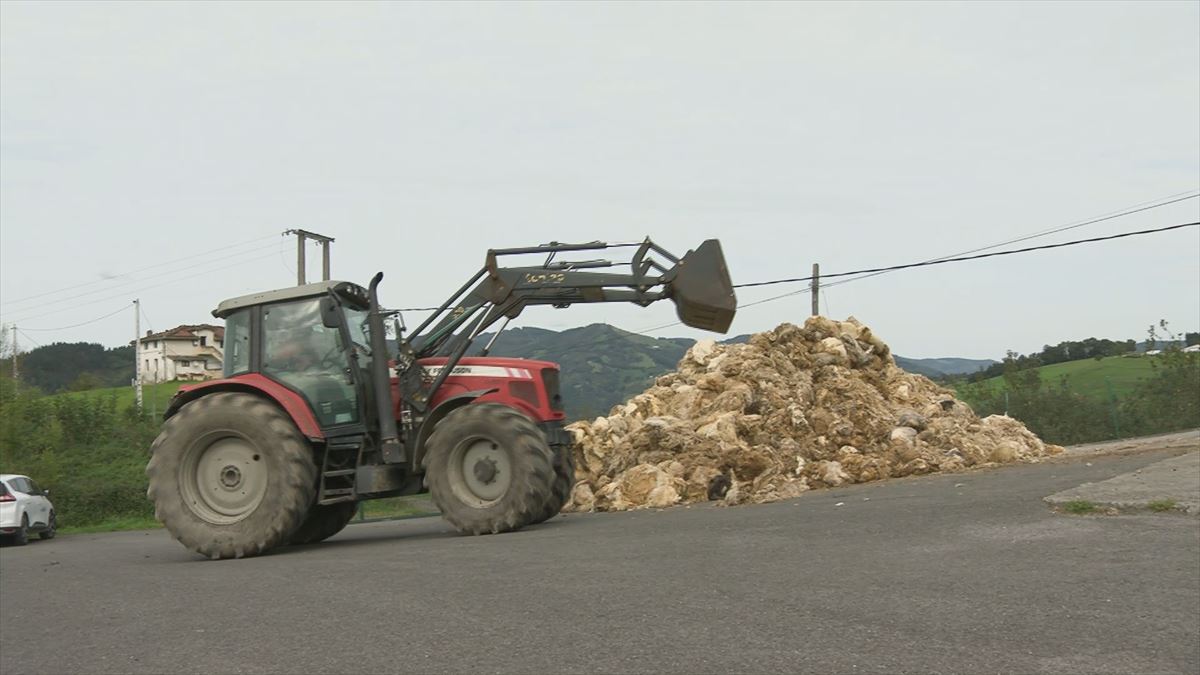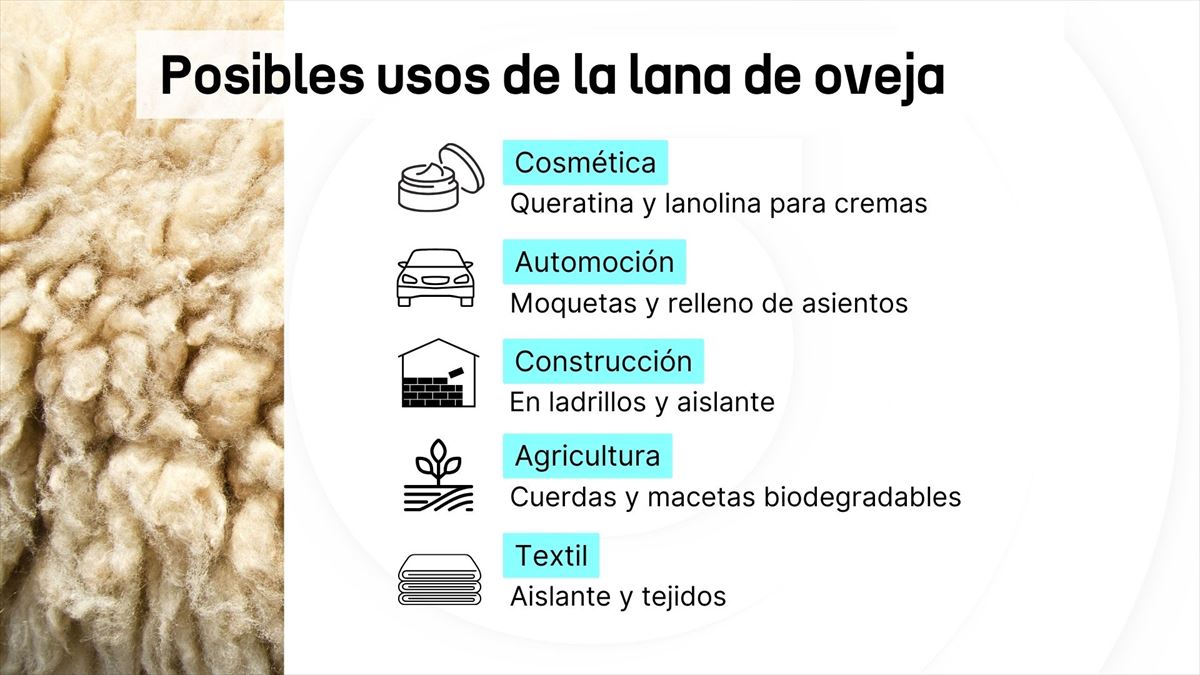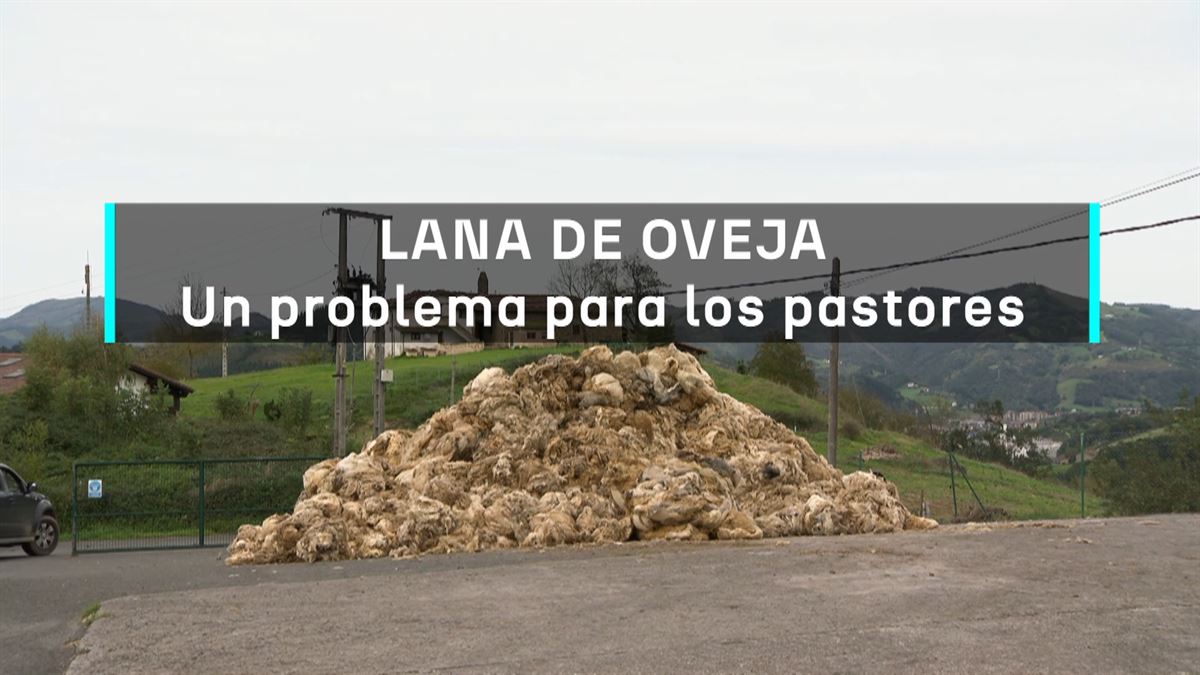Today they are engaged in wool collection in Gipuzkoa. For pastors, this issue has become a new headache because it is now a waste that no one wants. Furthermore, because it comes from an animal, there is nowhere to throw it away and its management entails costs.
A. Aramendi Elduaien | EITB media
sheep’s wool It is already a headache and expense for many pastors. In Gipuzkoa, the association of rural development agencies Landaola is currently carrying out an action wool collection. It is treated as one waste, but should not be thrown away in any way.
The collection will take place region by region in October and November. The shepherds and baserritarras who consider this can take the wool collected in the stables to the points previously established. Of course, before they deposited the wool, they had to do that pay a fee according to the sheep’s heads they have.

Until the end of the 20th century, sheep wool was a very good source of income in many farms. In addition to being used for traditional socks or sweaters, It was exported to eastern countries where it was used to make carpets and rugs.. However, with the appearance of new fibers, this material has lost value until hardly anyone wants it anymore and it has become waste.
However, in Hego Euskal Herria, around 1250 tons of wool every year. According to the data of the councils of Álava, Bizkaia and Gipuzkoa and the government of Navarra, in 2023 there were 500,000 sheep in the four areas, and it is estimated that each area produces an average of 2.5 kilos of wool per year.
How to manage it?
Wool is considered an animal by-product, so treating it as waste is regulations known as SANDACH. In 2009 and 2011, the Parliament and the Council of the European Union regulated the handling of these types of products with the aim of ensuring human safety. Therefore, wool management is obliged to be carried out with all measures required by this regulation. There are costs associated with the process.
Such as in Gipuzkoa, the Provincial Council of Bizkaia and the government of Navarre They organize or coordinate the wool collectionthrough rural development associations or associations. In addition, they finance part or all of the costs incurred.
In the case of Álava, waste management is the responsibility of every herder.
In Bizkaiathe 2024 collection took place in July and 80 tons were collected. In this case, the herders do not have to incur any costs, as the costs of the treatment are borne between the Bizkaimendi ADRs association and the Provincial Council.
In Navarrethe costs for dumping are €67 per tonne. However, the government has decided to temporarily abolish the landfill tax, which amounted to €15 per tonne.
In GipuzkoaThis year they expect to collect between 125 and 135 tons of wool, 40% of the total production in the area, according to Landaola representative and manager of the ADR Goimen Manex Aranburu.
The farmers who do not want to participate in these collections and manage wool yourself They mainly have two legal options: mix it with manure to use it as fertilizer or use it on the floor of the stables if they have a warm bed system.
Until 2023, much of Euskal Herria’s wool was taken to the Artajona waste factory to make compost. However, the service has been closed following the closure of the factory by the Navarre government and all surrounding institutions are looking for a new solution.
Possible applications
However, the ideal for wool would be to recover the value it had a few years ago, in the words of the Landaola representative. Aranburu assures that several studies have been done and that the wool of the latxa sheep has several beneficial properties, such as being refractory and difficult to catch fire. Therefore, it could be very useful in many market sectors.
In the sector textilethe Ternua company uses wool as insulation in one of its jacket models. It has also been found that it can be of benefit cosmeticduring which the keratin and lanolin it contains are extracted. It has also been used in in the automotive sector, in construction or to make agricultural products.

Aranburu believes that the great challenge of the future will be installed in the Basque Country companies dedicated to the treatment of wool for the different applications it can have: cleaning, carding, combing fibers or turning wool into powder, for example.

Source: EITB
I’m Wayne Wickman, a professional journalist and author for Today Times Live. My specialty is covering global news and current events, offering readers a unique perspective on the world’s most pressing issues. I’m passionate about storytelling and helping people stay informed on the goings-on of our planet.



